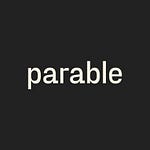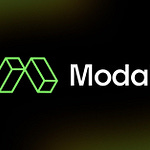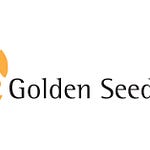The application layer of generative AI has become very crowded. How can your startup stand out from the pack?
Jasper is a generative AI company that has grown at an astounding pace. When I invested in the fall of 2021, CEO Dave Rogenmoser and his team of 9 people had grown the company from zero to $40M in ARR in 9 months.
Although they had the advantage of being among the first to market, they’ve also deftly and steadily built walls around their business, as a flock of talented folks start new generative AI companies.
I sat down with Jasper’s CMO Meghan Keaney Anderson to discuss:
What are the latest trends in generative AI?
What has driven Jasper’s ongoing success?
What can other generative AI companies learn from Jasper’s playbook?
You can listen to the podcast or read the lightly edited transcript below. Let’s dive in!
Leadership Roles
Here are a few leadership roles and other key roles at companies that I’m excited about.
Arketa: Head of Demand Gen
Explo: Head of Marketing
Fairmarkit: Customer Success Director
Jasper: Lots of roles across engineering and product, plus Sr. Manager of Customer Marketing!
Meez: Head of Growth
Pocus: Founding AE and other roles in Customer Success, Biz Ops, Demand Gen here
Transcript
Allison: Meghan, I am so excited to have you on the podcast today to chat about all things generative AI. Thanks for joining.
Meghan: I'm so thrilled to be here. It's such a great topic.
A: Let's start with giving folks a lay of the land of the generative AI landscape. I think most people who listen to this podcast know about ChatGPT. But how should we think about the landscape as a whole?
M: It's funny because it has just erupted over the last few months. So, it simultaneously feels like we're just soaking in generative AI everywhere around us, and there's also still a lot of confusion about how all these pieces fit together. There’s also confusion about what you should be thinking about in particular as a business leader facing this kind of new shift.
The way that I like to think about the AI landscape is that at the very foundational layer, there’s the data. And the data is produced through a compute layer that takes this enormous amount of text, image, and source material that then the large language models (LLMs) can train on.
The LLMs are what most people think of when they think about AI today. That's your OpenAI, Stability, these different open source or closed source models that pull from the data and generate the AI outputs, or at least baseline AI outputs.
On top of that, there is a set of applications that plug directly into those language models and directly just pull the outputs into their platforms. For example, I believe Notion plugs into OpenAI and pulls the outputs directly in without much change.
Then there are applications like Jasper, my company, which starts with a selection of baseline models and chooses the right one. Then it lays in things like recent search citations, your company's brand voice, and SEO optimization. It tries to enhance the outputs to make them more tailored and a better fit for businesses.
So, we have the compute layer, the LLM layer, and then the applications on top of that. That means that AI is everywhere. We should think about it as a utility, like the internet itself.
A: I know that things are changing really quickly. What would you say are the biggest trends happening in generative AI right now?
M: The rapid iteration is like nothing I've ever seen. The leaps that this thing is taking month over month, announcement over announcement—it feels like every announcement is up-leveling the prior one. I believe that for a while we'll be in this really explosive period. It's a rising tide. Everybody is learning at the same time and feeding off of each other's lessons.
As far as trends go, for businesses, there are a few themes that I think are rising to the top of the discussion right now. We've heard about these from our customers, and we hear from the broader industry. One theme is how to take generic outputs from AI and infuse them with the unique tone of voice of a brand, to make them more tailored to the way that a company writes or creates.
On-brand, personalized AI is a really interesting topic. Obviously, I've got some bias there because we play in that space, but we did a recent survey with a bunch of different marketing leaders. A desire for a more tailored AI was a top three ask of where they want AI to go.
The second big theme is about security, plagiarism, and ownership. These very important legal and safety questions are at various stages of being sussed out. This happens a lot when a technology accelerates so fast. There's a little bit of catch up to be done with the way that we regulate and build in protections.
The third big theme has been a long standing topic in AI that’s still at the forefront of discussion. That issue is the inherent bias and inaccuracies that can be found in AI and what we should do as an industry about those.
A: There’s a lot we could dive into here. To start, I'd love to follow up on one of the topics you mentioned, which is the demand from the market to have personalized outputs to the company's brand, or perhaps a personal brand. On that note, my husband actually decided to play a joke on me. He told ChatGPT, "write a blog post using the tone of Allison Pickens." It spit out a blog post that, content-wise, was very poor. But the tone actually matched how I talk really well.
M: Oh, that's awesome! Was it awesome or was it scary?
A: He didn't tell me what the prompt was when he showed it to me. And my first reaction was that the output didn't make a lot of sense, but I liked the style in which it was written. And then he told me the prompt — ChatGPT was using my own writing style! So, clearly there was some affinity there.
That example made me wonder if GPT can do the personalization itself. If not, what else do you need to do in order to make sure that these generative AIs can produce output that's consistent with the company's brand or your personal brand?
M: It's all about the training materials that they've been using. For example, if you are looking to create in the tone of someone who is very prolific and well-established already, the odds are you'll be able to mirror and mimic that tone, at least in some respects. It’s fun to go into a chat tool and try to write in the iconic voice of Morgan Freeman or another famous person.
But there is another level of personalization that we need to get to. We need to allow companies that don't have a ton of established writing yet to be able to infuse their standards, their tones, their style guide directly into the AI tools that they're using in a reliable and repeatable way. That's the next leap. And that takes some tailoring of the underlying model that you're using.
A: You mentioned different layers of the generative AI stack. Which categories of software are you most bullish on?
M: As a user, I really like the application layer. I've been a marketer for 20 years. I have felt the demand for content that generative AI produces. It’s really amazing when you take what is already a powerful piece of technology and you make the interface and the application of it. Motion did a really nice job with video. Canva does a great job of bringing assistance right into the Canva app through an API. That makes AI real to people.
Frankly when ChatGPT came out, it was really about the interface. What made it take off was that it was so approachable, so it could make a real difference in people's lives. That really captures people's imagination.
A: I've noticed in meeting with various startups that there's a lot of activity happening at the application layer. A lot of companies are trying to create generative AI that produces talking points for sales or other customer facing people. Recently, I've met with a couple of companies that use generative AI for product design. You can input in English the kind of web app that you want, and the product will spit it out. More broadly, there are many different categories where I've noticed there's a huge amount of talent being siphoned into these problem areas.
Has this giant gold rush created massive competition in every category, or do you think that some categories are less competitive than others?
M: Inherently, there will be some categories that are less competitive than others just because the pain point won't be as strong or the use case won't be as strong. Also, there are some categories that are riskier than others to use AI in. It's one thing to have an idea for a blog post and leverage AI to help get you over writer's block or to convey your ideas better. It's another thing to rely entirely on AI to spit out information that you need to make decisions. There are different risk levels for different categories, and different things that AI can solve.
People keep asking if this a bubble. They wonder, if everybody's rushing in, is the bubble going to pop in six months?
There's a bevy of activity right now, but I don't think that that means that AI is a bubble.
We've opened up this enormous era of potential, and people are jumping in to test out what's actually going to work and stick for this technology. I think that's a positive thing. Some businesses in this space aren't going to make it. There will be some consolidation around the very best use cases. Some use cases won’t quite fit. That's a natural evolution.
I like seeing more companies get into the AI space. For one thing, it raises awareness of what this thing is. My mom now knows what this is. She's constantly asking me if college students are going to use it to cheat. But beyond that, she knows about it and we can have that discussion.
A: You’re speaking to the idea that we're in an experimentation stage. Some experiments are going to succeed and people will build big companies. Some experiments will fail, and perhaps those people will join the other companies that are successful. But at least we’re all learning right now and contributing value in the sense that we're helping the ecosystem learn.
M: And remember that every one of those companies, ourselves included, are making decisions and bets based on the information that they have today. But whenever you're in an industry or space that is changing as much as this is day by day, those use cases are going to change. Your bets may pay off hugely, even more than you thought. Or they may not be relevant in a couple of months.
But again, I don't see that as volatility or something that should give companies pause. I see that as a sign that we should go into this thing ready to pivot because it is big enough and powerful enough for us to build whole ecosystems of new products and ideas to market.
A: Let's say you're in one of these very competitive categories and you're trying to break away from the pack. What would you say are the primary things that you can do to make your company more defensible — creating moats around your business?
M: You’ve got to really understand at a foundational level what it is that makes you different. It starts with differentiation. Why is it that you should exist to begin with? There was some reason, some need that was not sufficiently addressed in the options out there to have made your company’s creation necessary. That's going to change as the field changes. You want to constantly check in on this core idea and decide if that differentiation is still defensible and strong. If you start to see it slipping, check in on the industry and your customers again and figure out if they have evolved. Do they have new needs that are not being met?
I would advise companies to not focus on competition. Do not get distracted by competition. But do know your place in the market, understand why you are different and invest your efforts there. That could be product differences. It could be that you've got some proprietary thing that nobody else has and it's really wanted. It could be branding and community differences that allow you to just do a great job executing on the go-to-market. That's where your strength is going to be. You're going to out-market people and out-brand them. Maybe it’s community in that you really understand your audience, and you've narrowed that audience to such a place that they feel a sense of inclusion that they don't feel that elsewhere. There are many sources of different leverage you can pull for differentiation, but it's important to keep a tight eye on it in a changing space.
A: I agree with you. Differentiation will be really important. I notice that in many of these categories, the products within them seem basically identical. Founders might disagree with that, but at a basic level, from a user standpoint, they do seem quite similar. For some of these categories, it has to be all about the go-to-market—as you said, the brand, the community. Do you notice any strategies on the go-to-market front being particularly successful? You could also speak to Jasper's success in this area since I have observed you all doing an amazing job there.
M: Jasper came out in January 2021 and were early in making an application meant for marketers and for businesses. Obviously, AI and generative AI were around, but there weren't a lot of companies doing this very practical application of it. And very early in, Jasper got very strong traction because they addressed an acute pain point that marketers felt. They knew marketers really well. The founders come from marketing backgrounds, and they just solved a pain point really well. Then they layered onto that a very strong go-to-market.
The very first year to 18 months, Jasper was entirely focused on “solve the pain, and the customers will come.” And they did. Now as the field grew more crowded, that pain still exists, but that's no longer enough to differentiate. That’s because now there are two or three other companies that have popped up that address that same pain or that same audience. So, then you have to consider what makes your approach different.
For Jasper, we looked around and we saw that there are tons of generative AI tools out there. There are 15 chat knockoffs. But what we offer that most of those others don't came down to two things. One was that we weren't just sitting on top of OpenAI or any other language model. We had an engine that was choosing between different models for the best use case for marketers. We are good at layering in things like your brand voice. You can teach Jasper about your company so that it remembers that brand voice. We are layering in things like facts and more reliable stats, and enhancing that output so that it is more on brand, more reliable, and a better fit for marketers.
The other thing that we didn't see a lot of other companies doing was combining that on-brand AI assistance with the extendibility of being able to go wherever you wanted to create and call up Jasper with a keystroke. Our extensions and our forthcoming API are things that enable you to have your AI not tied so much to the tools that you use, but tied to you as a user and as a business, and available wherever you create.
You'll see more and more of that in our marketing and the way we talk about ourselves. But in another year there may be other companies that have caught up with that feature differentiation. And we'll need to look at that again. So you need to build on feature differentiation, marketing and brand differentiation, and community at the same time because it's the combination of the three that will help you go through those growth stages and not be overly reliant on any one area.
A: It's really interesting hearing your perspective on the ways in which Jasper is successful now, as opposed to when I got involved in fall of 2021. Back then, the Facebook community that was one of the things that was catalyzing Jasper’s growth and differentiation more than other factors. There were all these people coming together in this online community, sharing tips for how to use Jasper, how to get the best results from it, sharing the results that they got and expressing enthusiasm about the product. It struck me that Jasper was facilitating this really emotional journey for users. Do you think that the Facebook group was really core in the early days, but since then there have been other things you've layered on top of that that have been even more important?
M: It was really core in the early days and it's really core now, too. When I first joined the company, there were 70,000 engaged people sharing recipes, presenting their work for feedback and that kind of thing. I was really taken aback by how engaged and active that community is.
And the reality is those were the pioneers. They were the users that were getting into AI before all of their peers. And so we really treated them as pioneers in that we would release products to them early, get their opinion on things, make sure they felt and still feel a core part of our product and our go to market.
I think it's sitting around 80,000 today. It is still just as active and just as supportive as it was in those early days. And our plans arex to grow it and to expand it into other channels and do more with it. But that's our crew. You're doing something right if you've got a collection of that many people who came because of you, but are now truly a community outside of you.
A: In closing, if you had a quick tip to offer to a startup founder that's building in the generative AI space, what would that tip be?
M: Dive in and be ready to move. Again, there's so much change. There are new models all the time. There are new innovations all the time and you have to be ready to surf with those changes. But if you can get those sea legs and you have the clear insight into the problem you're solving, as the saying goes, “clear eyes, full hearts, can’t lose.”
There's just so much potential here still, even though so many companies are in it now. It is still very much the early days. It still very much feels like it's anyone's game. We're going to see more big players. Obviously Microsoft and Google are very loud in this game and are doing some incredible things themselves, but I think there's room in here. So, I don't know if that's good advice. It's more just like encouragement. Come on in, the water's nice.
A: I love how you ended with a quote from Friday Night Lights. You won over my heart and mind. Thank you so much for joining us, Megan.
M: That was just for you.










